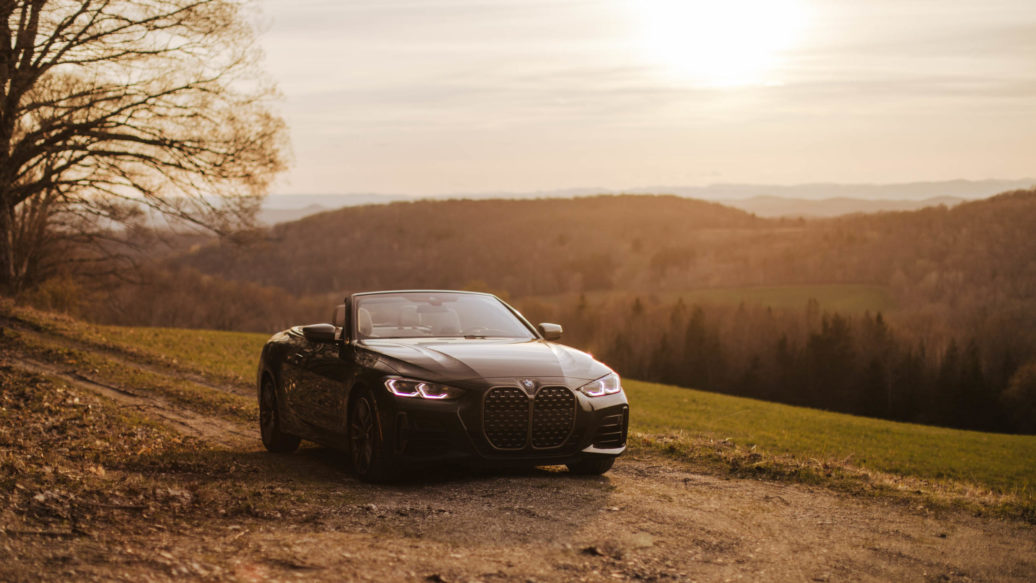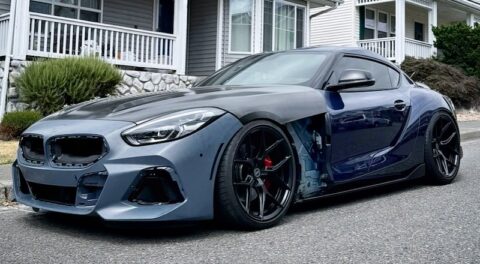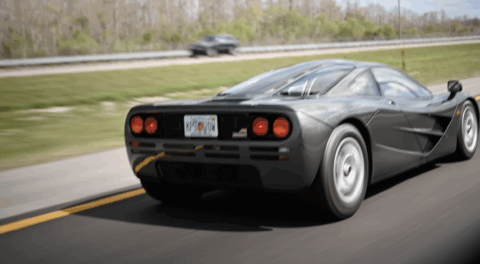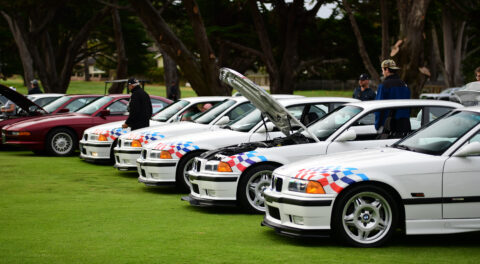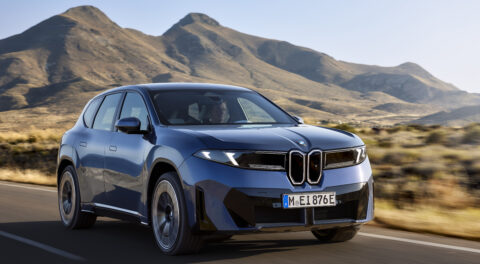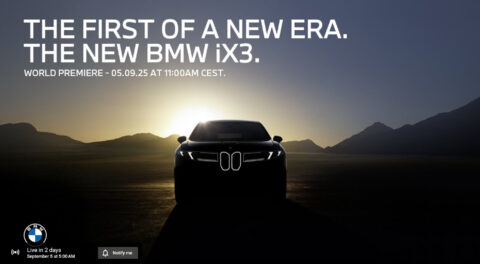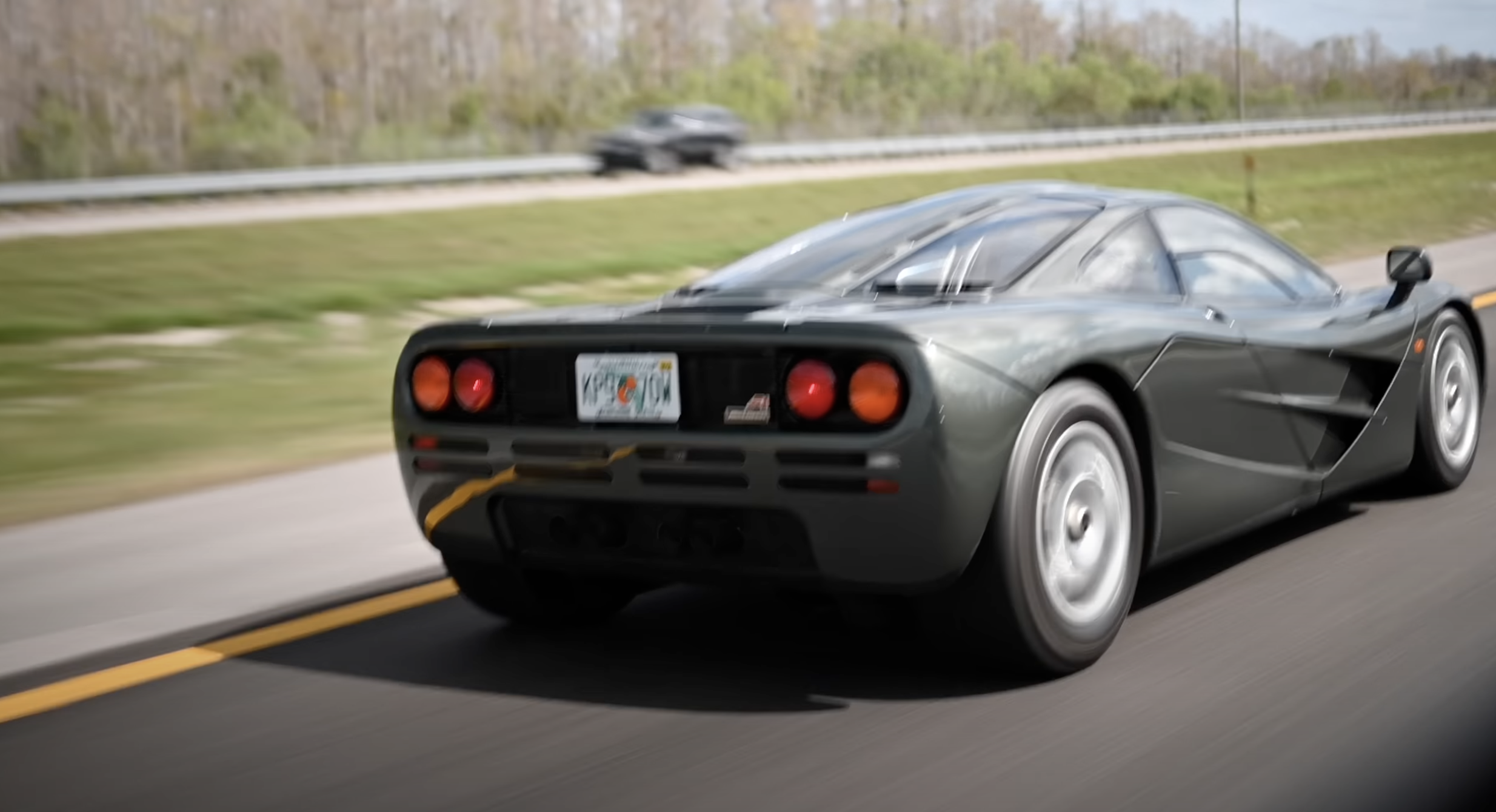It would be hard to argue that this holiday season hasn’t been a reflective moment at the end of a tumultuous year. And while it might not be on our minds as much during the holiday season, the past 24 months have been transformative in the automotive world, too.
Looking back at 2021, we’ve witnessed a range of evolutions and revolutions. These included the used-car market, where the ripple effect of auction platforms that emerged in 2020 turned into a tidal wave of new methods to buy, sell, and market enthusiast vehicles (and bringing investment culture to the automotive space). Our social spaces changed, too, as physical events returned this year—accompanied by new owners and new trends incubated in lockdown.
On a corporate level, fully electric vehicles from companies like Ford, Polestar, Rivian, and others have come to market after years of speculation and delays, giving the road-going public a sense of how life alongside electric vehicles will feel.

Soak up the modern BMW cockpit. We’ll be looking back on them fondly soon enough.
In the BMW world, there has been evolution, too. The year began with the controversial grilles and potent performance of the G80 M3 and M4, followed by appearances around the country in the hands of thrilled new owners. The last of BMW’s i3 and i8 inventory left dealer lots, too, soon to be replaced by the next generation of electrified BMWs. Finally, BMW M unveiled a partially electrified concept of its own that succeeds the first standalone M vehicle since the M1: the BMW Concept XM.
In this new world of styling statements and electrification, there have been some feisty conversations on Facebook and Instagram about the direction of the modern automobile, owners who swear that they’ll think twice before replacing their current leases and lamenting, “Why doesn’t BMW make cars like the E46 anymore?”
Why would you want them to?
Back in 2015, noted ex-BMW vice-president of sales Bob Lutz declared in a Road & Track article, “Nobody makes bad cars anymore.” And while we can hem and haw, and pull together lists of outliers and CVT rental-fleet bait, he’s largely right: Cars today are reliable, feature-rich machines that receive efficient warranty service by dealers, and they’ll will get you where you’re going at speeds that past models could only dream of. By any quantifiable metric, a 2021 BMW 330i with base seats and all-season tires will smoke any non-M product from the early 2000s—and that gap is only going to grow wider as EVs become widely adopted.
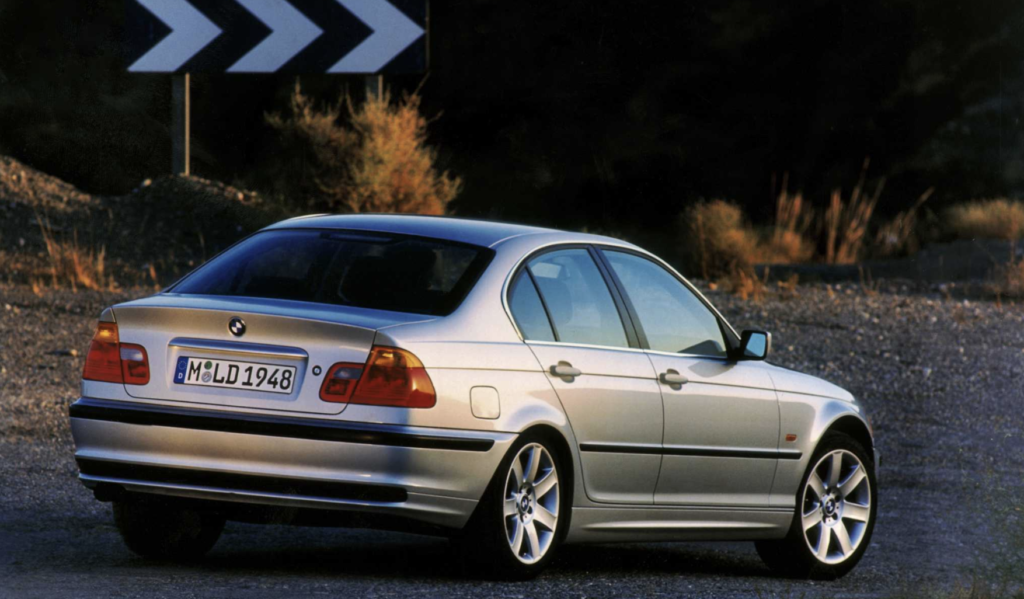
The object of many a social media commenter’s desire: the E46 3 Series.
Of course, the argument was never really about returning to the E46. Twenty-four years ago, when the E46 was released, the same argument arose regarding the E30, and 24 years before that, the 2002. Whether they slung their words on the pages of social media, message boards, forums, or good old-fashioned paper and pen, voices of dissent will always make themselves heard when it comes to new automotive products. But no matter how uncharted you might feel this territory to be, there is always precedent.
Take design, for instance, where BMW has a long history of innovative and bold styling choices that have ultimately driven automotive design forward. There were the E46 and E36 “compacts” (the latter of which we received as the 318ti), the Z1 composite exercise, and the various city-car concepts that led to the R53 Mini Cooper. Even generational changes like the E36 3 Series and E32 7 Series were departures from their predecessors that garnered attention and discussion at the times of their release—but now, as classics, they look light years newer than their predecessors. The community also piled a lot of flack onto the designs of the E65 7 Series and E60 5 Series that debuted in 2002 and 2003, but looking back, these cars—particularly their facelift LCI versions—look surprisingly contemporary.
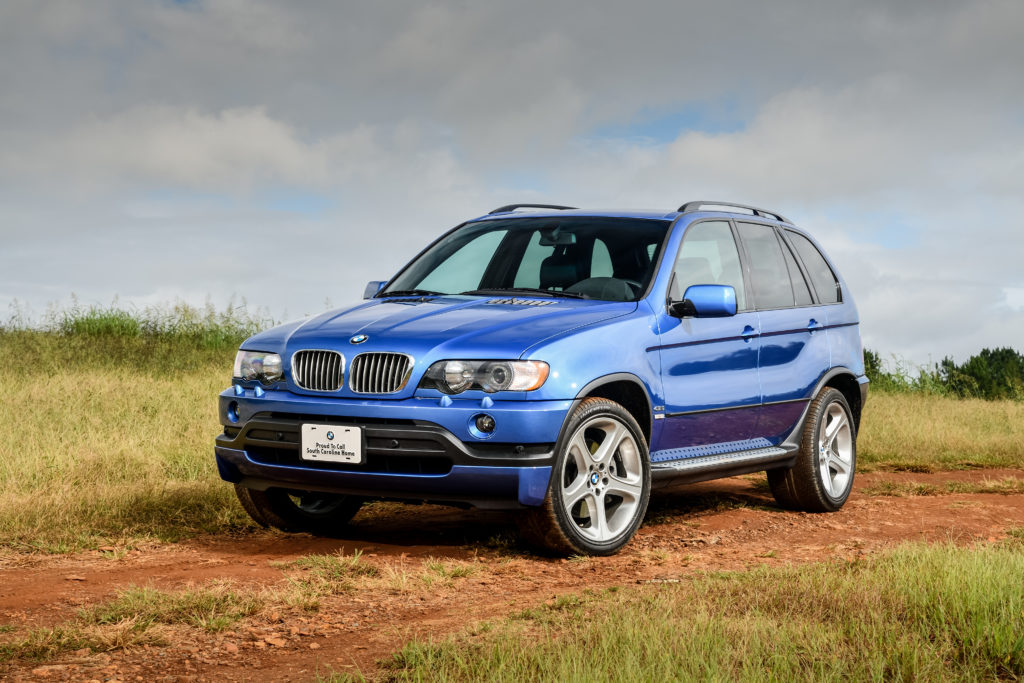
The BMW X5 4.6iS was a high-performance X5 before the first X5 M arrived with the E70 chassis.
The E53 X5 deserves an ode of its own in this regard. I was four when the first-generation X5 came out, but based on letters to Roundel, some drivers seemed to be in quite a huff about brand identity during that SAV’s development period. But like the 5 and 7 Series generations mentioned above, the X5 was an essential step toward the driver of the future—not to mention a fabulous product that holds up rather well even today.
There are a few who have given collector status (deservedly, I feel) to the spectacular 4.6is and 4.8is X5s, which were high-performance, V8-powered vehicles with bold styling and tributes to BMW M throughout. Some of these same owners and fans have also made clear their distaste for the upcoming XM: a high-performance, V8-powered, M-developed vehicle with bold styling and tributes to BMW M throughout. Call me a futurist, but I anticipate a change of heart.
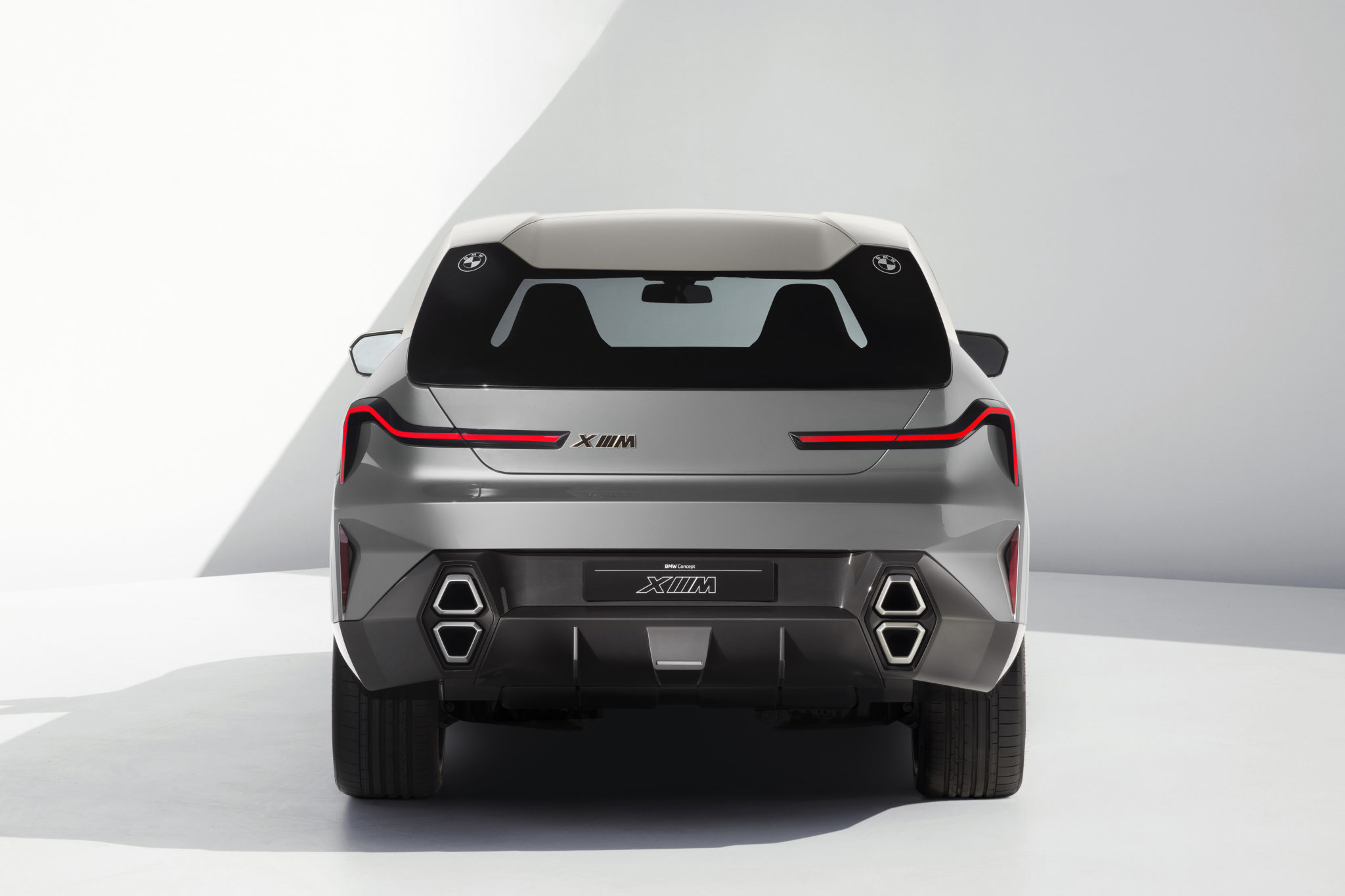
In reality, the cars we love to look back on were built for different times. The E46 is as old today as the last of the E12 5 Series sedans were when it came out. And the E30? The earliest 318i is as old today as a 1962 BMW 3200 CS would have been in the year 2000. Sure, the current lineup can’t exactly be repaired with a 10-mm wrench and some carb cleaner, but neither can a 2002 M5, or a 2009 E92 M3. And maybe I’m getting old, but I would rather have a car that works than a car that needs starting fluid sprayed into the carvuretor in the blustery slush of winter—not all the time, at least.
The good news is that we don’t have to choose; vintage cars (and yes, I’m including your early-2000s favorites) have exploded in desirability, thanks to the forces at work in the collector-car market—and with desirability comes support in the form of parts and expertise. Sure, it will probably be more expensive, and harder to track down parts, but at least we don’t need to worry about these cars disappearing entirely. Instead, the last few years have shown growing interest as drivers seek out analog options.
And this means that contemporary vehicles don’t need to be analog to be good.
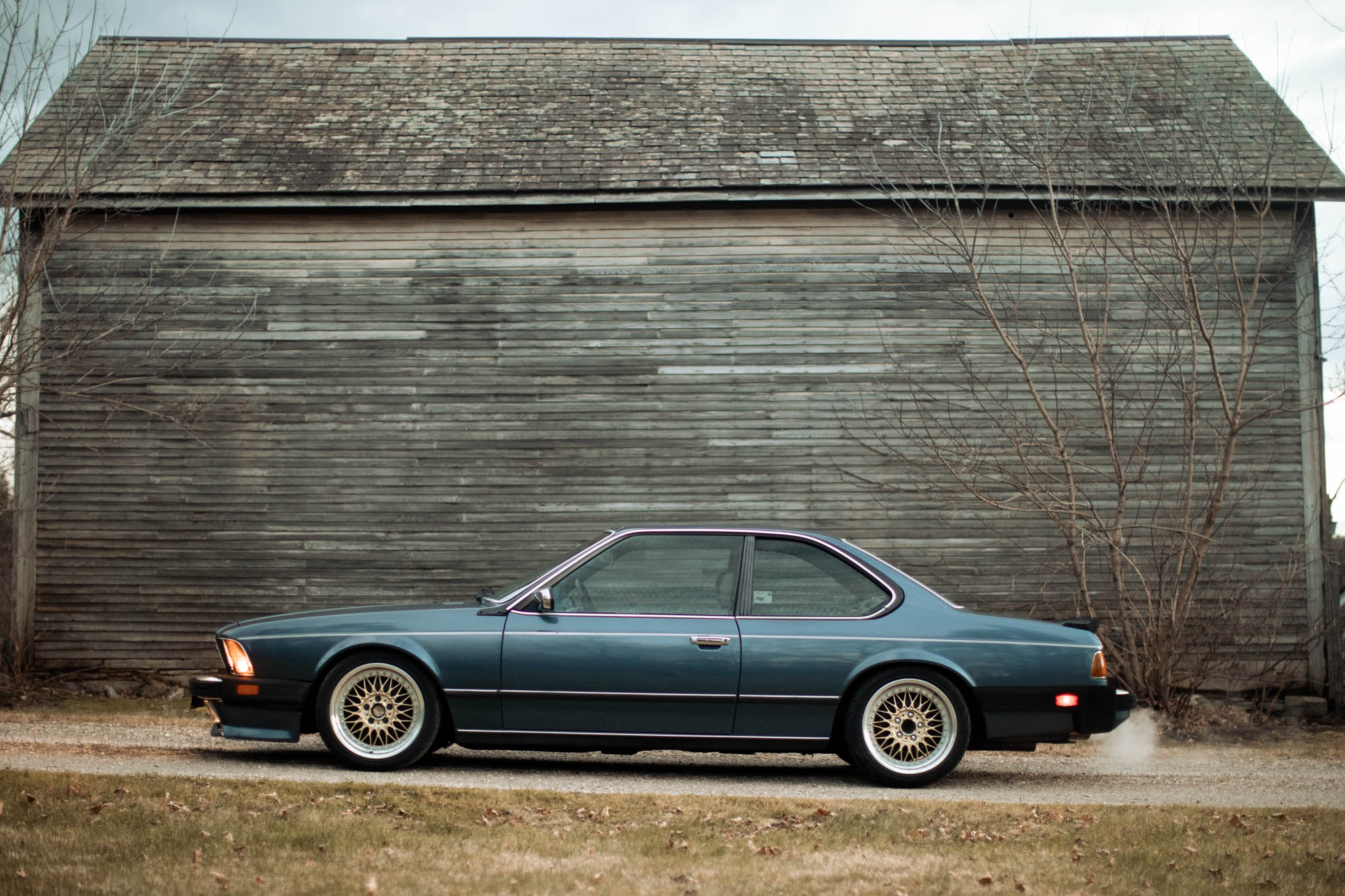
Over the past nine years, my 635CSi has seen temperatures from 10ºF to 100ºF, hours-long traffic jams, snow, rain, and humidity. Even if it were brand-new, I wouldn’t want to deal with it all in this car again.
Many of our opportunities to experience new cars come in environments that focus on speed and power, whether that means an autocross, BMW’s fantastic Performance Centers, or maybe an M Track Day. But instead of judging by that metric, I would encourage you to think about how a car feels on the opposite of those days: in the slush of winter, with wind and sleet cutting against your jacket as you push a shopping cart out of Home Depot, or on a Wednesday afternoon in summer with 90% humidity, walking back from the office to a car that’s been baking in the parking lot. Hydraulic power steering and throttle cables don’t offer much respite on those days, and no one will make you turn in your BMW CCA membership card for not wanting to sweat it out. That fact that a modern BMW can take this in stride, then turn the interior into a concert venue with the Harman/Kardon system, then transform into a canyon-carver, and then revert back into a comfortable luxury cruiser, is testament to the fact that BMW is BMW; they just build cars for a more advanced world.
Driver assistance and automatic gearboxes aren’t the automotive apocalypse, just as electric power steering and throttle-by-wire weren’t, either. They’re just there to help make things a little easier, like power steering in the 1960s and ABS in the 1980s. And among the sea of crossovers, I think we’ll come to look back fondly on a time when BMW decided to take a chance with bold designs, even if the lines aren’t as simple as those on that vintage E36 M3 in the garage. Besides, by the time we have that discussion, there will be new cars to argue about, and we’ll be doing so regarding platforms that haven’t even been invented yet.
For now? Enjoy the cars you have, and let people enjoy new things. The cars we’re debating are already future classics; we just don’t know it yet.—David Rose
[Photos courtesy David Ros, BMW Group.]

